Lending Library
 A Thorn in My Pocket is Eustacia Cutler's story of raising her daughter, Temple Grandin, in the conservative Leave-it-to-Beaver world of the fifties, a time when children with autism were routinely diagnosed as "infant schizophrenics" and banished to institutions. She tells of her fight to keep Temple in the mainstream of family, community, and school life, how Temple responded and went on to succeed, as Ms. Cutler puts it, "beyond my wildest dreams." Ms. Cutler also explores the nature of the autism disorder as doctors understand it today, and how its predominant characteristics reflect our own traits in an exaggerated form.
A Thorn in My Pocket is Eustacia Cutler's story of raising her daughter, Temple Grandin, in the conservative Leave-it-to-Beaver world of the fifties, a time when children with autism were routinely diagnosed as "infant schizophrenics" and banished to institutions. She tells of her fight to keep Temple in the mainstream of family, community, and school life, how Temple responded and went on to succeed, as Ms. Cutler puts it, "beyond my wildest dreams." Ms. Cutler also explores the nature of the autism disorder as doctors understand it today, and how its predominant characteristics reflect our own traits in an exaggerated form.Insightful chapters include:
And Baby Makes Three
As the Twig Is Bent..... Read more
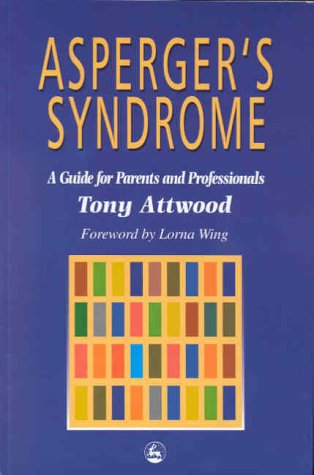 Tony Attwood's guide will assist parents and professionals with the identification, treatment and care of both children and adults with Asperger's Syndrome. The book provides a description and analysis of the unusual characteristics of the syndrome and practical strategies to reduce those that are most conspicuous or debilitating. Beginning with a chapter on diagnosis, including an assessment test, the book covers all aspects of the syndrome from language to social behaviour and motor clumsiness, concluding with a chapter based on the questions most frequently asked by those who come into contact with individuals with this syndrome. Covering the available literature in full, this guide brings together the most relevant and useful information on Asperger's Syndrome, incorporating case studies from the author's own practical experience as a Clinical Psychologist, with
Tony Attwood's guide will assist parents and professionals with the identification, treatment and care of both children and adults with Asperger's Syndrome. The book provides a description and analysis of the unusual characteristics of the syndrome and practical strategies to reduce those that are most conspicuous or debilitating. Beginning with a chapter on diagnosis, including an assessment test, the book covers all aspects of the syndrome from language to social behaviour and motor clumsiness, concluding with a chapter based on the questions most frequently asked by those who come into contact with individuals with this syndrome. Covering the available literature in full, this guide brings together the most relevant and useful information on Asperger's Syndrome, incorporating case studies from the author's own practical experience as a Clinical Psychologist, with examples of, and numerous quotations from people with Asperger's Syndrome.
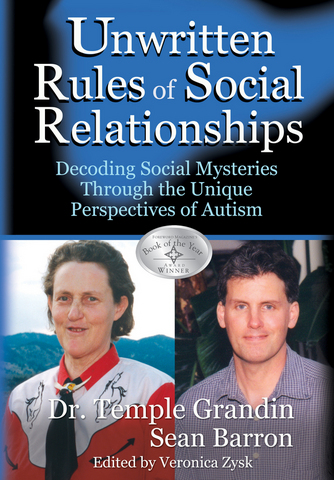 Born with autism, both authors now famously live successful social lives. But their paths were very different. Temple's logical mind controlled her social behavior. She interacted with many adults and other children, experiencing varied social situations. Logic informed her decision to obey social rules and avoid unpleasant consequences. Sean's emotions controlled his social behavior. Baffled by social rules, isolated and friendless, he made up his own, and applied them to others. When they inevitably broke his rules, he felt worthless and unloved. Both Temple and Sean ultimately came to terms with the social world and found their places in it. Whether you are a person with autism, a caregiver in the autism community, or just someone interested in an "outsider" view of society, their powerful stories will enthrall and enlighten you..... read more
Born with autism, both authors now famously live successful social lives. But their paths were very different. Temple's logical mind controlled her social behavior. She interacted with many adults and other children, experiencing varied social situations. Logic informed her decision to obey social rules and avoid unpleasant consequences. Sean's emotions controlled his social behavior. Baffled by social rules, isolated and friendless, he made up his own, and applied them to others. When they inevitably broke his rules, he felt worthless and unloved. Both Temple and Sean ultimately came to terms with the social world and found their places in it. Whether you are a person with autism, a caregiver in the autism community, or just someone interested in an "outsider" view of society, their powerful stories will enthrall and enlighten you..... read more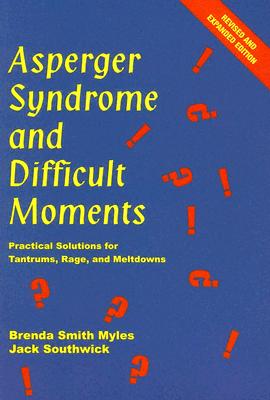 This expanded edition of the bestselling AAPC classic offers both parents and professionals tried-and-true solutions to minimize and circumvent the often frightening circumstances that surround the rage cycle not only for the child with Asperger Syndrome but others in the environment as well. In addition to almost doubling the section on interventions, this highly practical and user-friendly resource also focuses on the reactions of the adults around the child. This detailed book takes the reader through the stages of the rage cycle and emphasizes the importance of utilizing the teachable moments before and after a rage episode. edit this text.
This expanded edition of the bestselling AAPC classic offers both parents and professionals tried-and-true solutions to minimize and circumvent the often frightening circumstances that surround the rage cycle not only for the child with Asperger Syndrome but others in the environment as well. In addition to almost doubling the section on interventions, this highly practical and user-friendly resource also focuses on the reactions of the adults around the child. This detailed book takes the reader through the stages of the rage cycle and emphasizes the importance of utilizing the teachable moments before and after a rage episode. edit this text.
Publication Date: March 29, 2005
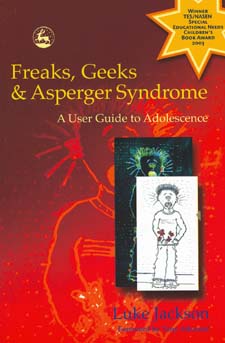 Have you ever been called a freak or a geek? Have you ever felt like one? Luke Jackson is 13 years old and has Asperger Syndrome. Over the years Luke has learned to laugh at such names but there are other aspects of life which are more difficult. Adolescence and the teenage years are a minefield of emotions, transitions and decisions and when a child has Asperger Syndrome, the result is often explosive.
Have you ever been called a freak or a geek? Have you ever felt like one? Luke Jackson is 13 years old and has Asperger Syndrome. Over the years Luke has learned to laugh at such names but there are other aspects of life which are more difficult. Adolescence and the teenage years are a minefield of emotions, transitions and decisions and when a child has Asperger Syndrome, the result is often explosive.Luke has three sisters and one brother in various stages of their adolescent and teenage years but he is acutely aware of just how different he is and how little information is available for adolescents like himself.
Drawing from his own experiences and gaining information from his teenage brother and sisters, he wrote this enlightening, honest and witty book in an attempt to
address difficult topics such as bullying, friendships, .... Read more
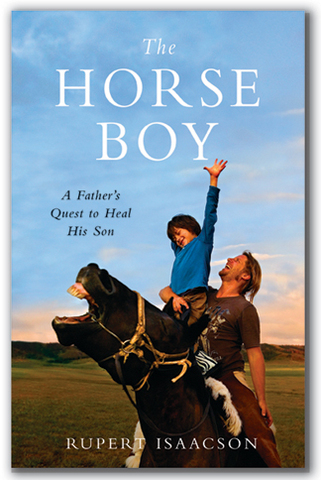 When his son Rowan was diagnosed with autism, Rupert Isaacson was devastated, afraid he might never be able to communicate with his child. But when Isaacson, a lifelong horseman, rode their neighbor's horse with Rowan, Rowan improved immeasurably. He was struck with a crazy idea: why not take Rowan to Mongolia, the one place in the world where horses and shamanic healing intersected?
When his son Rowan was diagnosed with autism, Rupert Isaacson was devastated, afraid he might never be able to communicate with his child. But when Isaacson, a lifelong horseman, rode their neighbor's horse with Rowan, Rowan improved immeasurably. He was struck with a crazy idea: why not take Rowan to Mongolia, the one place in the world where horses and shamanic healing intersected? The Horse Boy is the dramatic and heartwarming story of that impossible adventure. In Mongolia, the family found undreamed of landscapes and people, unbearable setbacks, and advances beyond their wildest dreams. This is a deeply moving, truly one-of-a-kind story--of a family willing to go to the ends of the earth
to help their son, and of a boy learning to connect with the world for the first time.
Publication Date: June 3, 2009
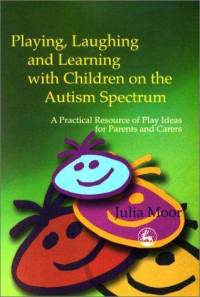 Parents of young children newly diagnosed as on the autism spectrum are often at a loss for ideas about how best to help their child. Playing, Laughing and Learning with Children on the Autism Spectrum is not just a collection of play ideas; it shows how to break down activities into manageable stages, and looks at ways to gain a child's attention and motivation and to build on small achievements.
Parents of young children newly diagnosed as on the autism spectrum are often at a loss for ideas about how best to help their child. Playing, Laughing and Learning with Children on the Autism Spectrum is not just a collection of play ideas; it shows how to break down activities into manageable stages, and looks at ways to gain a child's attention and motivation and to build on small achievements.Each chapter covers a collection of ideas around a theme, including music, art, physical activities, playing outdoors, puzzles, turn-taking and using existing toys to create play sequences. There are also chapters on introducing reading and making the most of television. This updated second edition contains an extensive chapter on how to use the computer, the internet and the digital camera to find and make
resources and activities, ....... Read more
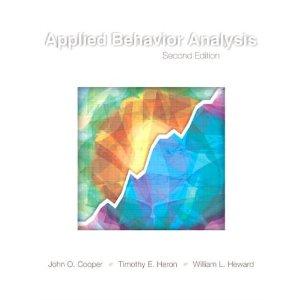 Applied Behavior Analysis provides a complete description of the principles and procedures needed to systematically change socially significant behavior and to understand the reasons for that change. This comprehensive text, appropriate for courses in basic principles, applications, and behavioral research methods, helps students, educators, and practitioners appreciate and begin to acquire the conceptual and technical skills necessary to foster socially adaptive behavior in diverse individuals.
Applied Behavior Analysis provides a complete description of the principles and procedures needed to systematically change socially significant behavior and to understand the reasons for that change. This comprehensive text, appropriate for courses in basic principles, applications, and behavioral research methods, helps students, educators, and practitioners appreciate and begin to acquire the conceptual and technical skills necessary to foster socially adaptive behavior in diverse individuals.Publication Date: January 7, 2007
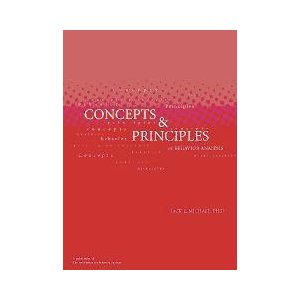 Concepts and Principles of Behavioral Analysis, Revised Edition [Paperback]
Concepts and Principles of Behavioral Analysis, Revised Edition [Paperback]By Jack L. Michael
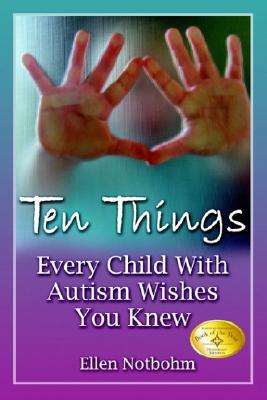 Winner of an iParenting Media Award and Honorable Mention in the 2005 ForeWord Book of the Year Awards! Every parent, teacher, social worker, therapist, and physician should have this succinct and informative book in their back pocket. Framed with both humor and compassion, the book defines the top ten characteristics that illuminate the minds and hearts of children with autism. Ellen's personal experiences as a parent, an autism columnist, and a contributor to numerous parenting magazines coalesce to create a guide for all who come in contact with a child on the autism spectrum. Don't buy just one of this book- buy one for everyone who interacts with your child! Give the gift of understanding.
Winner of an iParenting Media Award and Honorable Mention in the 2005 ForeWord Book of the Year Awards! Every parent, teacher, social worker, therapist, and physician should have this succinct and informative book in their back pocket. Framed with both humor and compassion, the book defines the top ten characteristics that illuminate the minds and hearts of children with autism. Ellen's personal experiences as a parent, an autism columnist, and a contributor to numerous parenting magazines coalesce to create a guide for all who come in contact with a child on the autism spectrum. Don't buy just one of this book- buy one for everyone who interacts with your child! Give the gift of understanding.Helpful chapters include:
My sensory perceptions are disordered
Distinguish between won’t and can’t............ Read More
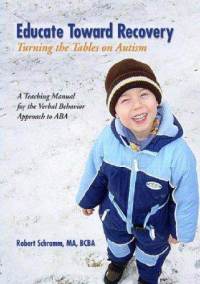 A Teaching Manual for the Verbal Behavior Approach to ABA: "Robert Schramm has written a book that is a must read for parents, therapists, and teachers of children with autism. This book is clear, heartfelt, informative, and provides behavioral terminology in a way that is applicable and easy to understand. He has beautifully explained Applied Behavior Analysis as an effective, scientifically validated treatment for autism. Robert's book offers realistic hope in a world where it is needed most. We personally recommend this book to every parent or educator of a child in need." (Cherish Twigg, MS, BCBA and Holly Kibbe, MS, BCBA)
A Teaching Manual for the Verbal Behavior Approach to ABA: "Robert Schramm has written a book that is a must read for parents, therapists, and teachers of children with autism. This book is clear, heartfelt, informative, and provides behavioral terminology in a way that is applicable and easy to understand. He has beautifully explained Applied Behavior Analysis as an effective, scientifically validated treatment for autism. Robert's book offers realistic hope in a world where it is needed most. We personally recommend this book to every parent or educator of a child in need." (Cherish Twigg, MS, BCBA and Holly Kibbe, MS, BCBA) "This is the best book on the Verbal Behavior approach to ABA that I have seen. If I was going to recommend only one book to either the parents of a child with
autism or to anyone who is trying to help a child...... Read more
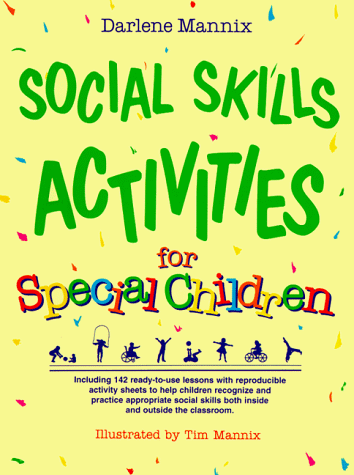 A flexible, ready-to-use program to help special students in grades K-5 learn appropriate ways to behave among others
A flexible, ready-to-use program to help special students in grades K-5 learn appropriate ways to behave among othersThis bestselling resource book provides ready-to-use lessons--complete with reproducible worksheets--to help children become aware of acceptable social behavior and develop proficiency in acquiring basic social skills. The book is organized around three core areas crucial to social development in the primary grades: Accepting Rules and Authority at School, Relating to Peers, and Developing Positive Social Skills. Each lesson places a specific skill within the context of real-life situations, giving teachers a means to guide students to think about why the social skill is important. The hands-on activity that accompanies each lesson helps students to work through, think about, discuss, and practice
the skill in or outside of the classroom.
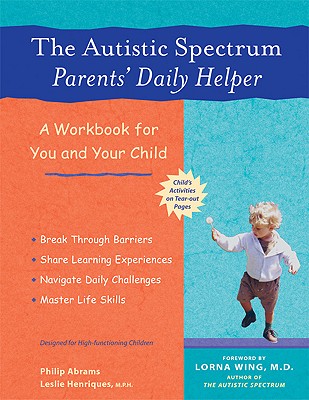 As the parent of a child with autism, you know how difficult it can be to simply get through the day. From getting dressed in the morning to brushing teeth before bed, raising a special needs child can turn ordinary events into extraordinary challenges. This book focuses on those kinds of everyday events.
As the parent of a child with autism, you know how difficult it can be to simply get through the day. From getting dressed in the morning to brushing teeth before bed, raising a special needs child can turn ordinary events into extraordinary challenges. This book focuses on those kinds of everyday events.YOUR WORKBOOK
Discover the methods for breaking through to your child and reaching into his or her world while supporting his or her learning style. Designed specifically for parents, this section introduces you to the exercises and activities you will be doing with your child. Everything is carefully explained, using lay terminology and simple illustration, including: ........ Read more
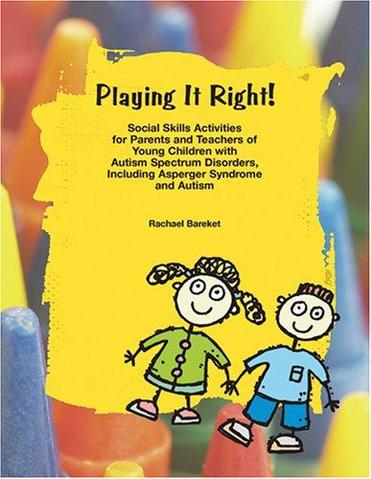 The social world is very complex, and children with a developmental delay in this area need basic tools to help them succeed in their friendships and to communicate effectively in the world. The book is a series of activities designed to help children on the autism spectrum develop basic social skills by focusing on elements of social interaction in a variety of settings home, preschool, kindergarten and elementary school. The book is intended for use by parents, teachers and others working with young children of varying ages. The appendix includes materials such as reward cards, schedules, choice boards, and worksheet templates.
The social world is very complex, and children with a developmental delay in this area need basic tools to help them succeed in their friendships and to communicate effectively in the world. The book is a series of activities designed to help children on the autism spectrum develop basic social skills by focusing on elements of social interaction in a variety of settings home, preschool, kindergarten and elementary school. The book is intended for use by parents, teachers and others working with young children of varying ages. The appendix includes materials such as reward cards, schedules, choice boards, and worksheet templates.Publication Date: February 8, 2006
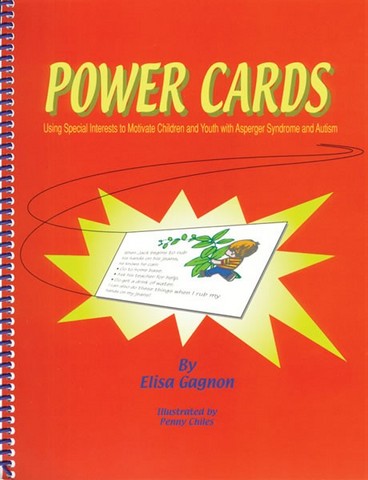 The motivational power of special interests has long been established. This step-by-step book shows parents and educators how to help change an unwanted or inappropriate behavior by capitalizing on the special interests that characterize children and youth with Asperger Syndrome. The approach is simple, making it easy for parents and educators to use and easy for children to learn desired behaviors. A brief, motivational text related to the child s special interest or a highly admired person is combined with an illustration, which is then made into a bookmark or business card- sized Power Card that the child can refer to whenever needed. For younger children, the special interest or hero is incorporated into a short story.
The motivational power of special interests has long been established. This step-by-step book shows parents and educators how to help change an unwanted or inappropriate behavior by capitalizing on the special interests that characterize children and youth with Asperger Syndrome. The approach is simple, making it easy for parents and educators to use and easy for children to learn desired behaviors. A brief, motivational text related to the child s special interest or a highly admired person is combined with an illustration, which is then made into a bookmark or business card- sized Power Card that the child can refer to whenever needed. For younger children, the special interest or hero is incorporated into a short story.Publication Date: November 1, 2001
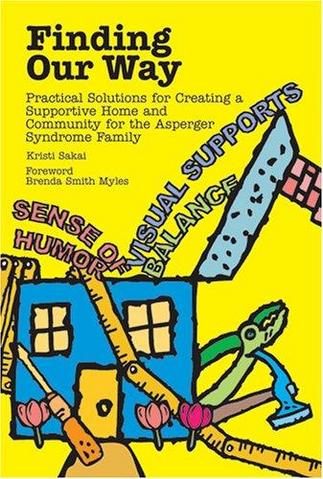 Publication Date: June 1, 2005
Publication Date: June 1, 2005This book, written by the mother of three children on the autism spectrum, targets the major issues families face in creating a comfortable environment for every family member. With a balance of heart-warming and side-splitting humor, the author presents countless practical tools for dealing with everything from home-school relations to organization to just getting through a trip to the grocery store.
Publication Date: June 1, 2005
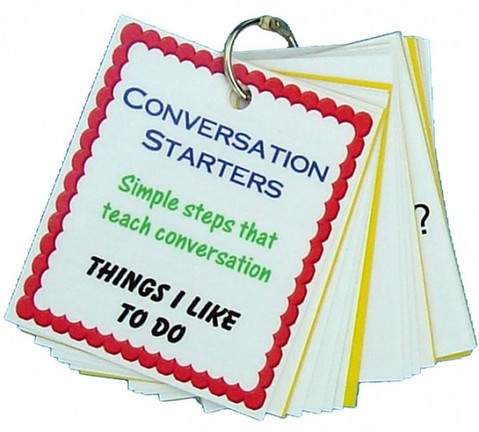 Six different topics. Examples include movies, play, sport, computer games, books and TV. Each topic begins with a yellow card so they can be found quickly. Each card has a question on the front. Flip it over and the beginning of the answer is on the back. Different conversations to teach a child how to engage in a appropriate conversation.
Six different topics. Examples include movies, play, sport, computer games, books and TV. Each topic begins with a yellow card so they can be found quickly. Each card has a question on the front. Flip it over and the beginning of the answer is on the back. Different conversations to teach a child how to engage in a appropriate conversation.Why are these so successful?
Children practice conversation in simple steps. They learn the flow of information continues about the same topic. These are not learned social scripts. They teach spontaneous conversation as the child fills in the blanks.
Read more
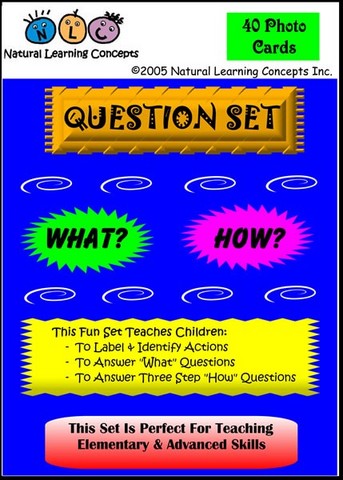 This winning formula teaches children to answer "HOW" and "WHAT" questions with ease. "HOW" questions are broken down into 3 simple steps for understanding. "WHAT" questions also designed to teach actions. Prepare to be astonished as children begin to effortlessly respond to "WHAT" and "HOW" questions. Versatile pack and expertly designed to teach at 3 different levels:
This winning formula teaches children to answer "HOW" and "WHAT" questions with ease. "HOW" questions are broken down into 3 simple steps for understanding. "WHAT" questions also designed to teach actions. Prepare to be astonished as children begin to effortlessly respond to "WHAT" and "HOW" questions. Versatile pack and expertly designed to teach at 3 different levels:Beginner level - identify and label actions
Intermediate level - teach children to understand and answer "WHAT" question
Advanced level - teach the student to answer a "HOW" question (3 step answer) Read more
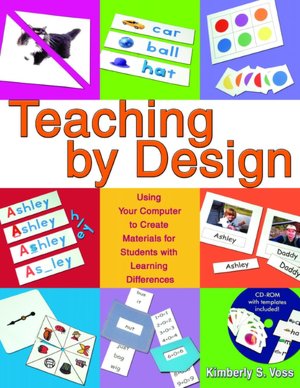 TEACHING BY DESIGN shows readers how to use the computer to design meaningful educational materials for children and adults with special needs. A synthesis of computer graphics, education, and crafting, this book represents the author's considerable expertise in customizing educational materials for her daughter with multiple disabilities as well as teaching other parents and teachers to create them too.
TEACHING BY DESIGN shows readers how to use the computer to design meaningful educational materials for children and adults with special needs. A synthesis of computer graphics, education, and crafting, this book represents the author's considerable expertise in customizing educational materials for her daughter with multiple disabilities as well as teaching other parents and teachers to create them too.Full of instructions for designing and adapting materials and strategies for using them--including a time-saving CD-rom of templates--TEACHING BY DESIGN is useful to parents and teachers of students of all ages with a wide range of disabilities. Design and customize lotto boards, interactive spelling cards, game pieces, playing cards, matching games, menus, fill-in-the-blank
decals, handwriting transparencies......... Read more
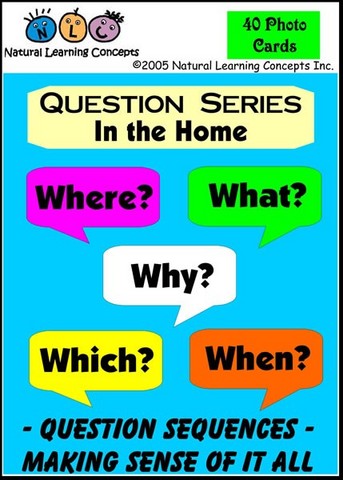 Your child will understand and answer all the "WH" questions. "WHAT", "WHEN", "WHERE", "WHY" AND "WHO". This unique system gives excellent results! Children are finally able to make sense of "WH" questions using these expertly designed question sequences. This pack teaches children to answer questions about all the things we do at home.
Your child will understand and answer all the "WH" questions. "WHAT", "WHEN", "WHERE", "WHY" AND "WHO". This unique system gives excellent results! Children are finally able to make sense of "WH" questions using these expertly designed question sequences. This pack teaches children to answer questions about all the things we do at home.What's in this pack?
40 excellent quality laminated photo cards for teaching children question comprehension. The back of each card clearly teaches children how to answer questions with these specifically designed question sequences. The card size is 5"x3.5". Examples in this pack are taking a bath, eating breakfast, brushing teeth, playing hide and go seek and baking cookies. This pack has a track record of
success!
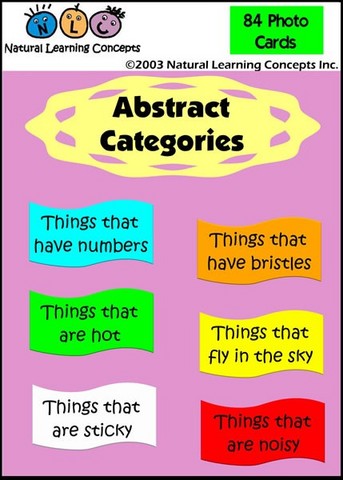 Understanding abstract information is a lot more challenging than understanding concrete information. This set teaches abstract thinking and sorting by category. Children learn that although items may be different they still have a common base. A child may be able to name concrete categories such as animals, shapes or colors. However abstract categories such as things that are noisy, things you find at birthday parties or things that have bristles are equally important for understanding the world around us.
Understanding abstract information is a lot more challenging than understanding concrete information. This set teaches abstract thinking and sorting by category. Children learn that although items may be different they still have a common base. A child may be able to name concrete categories such as animals, shapes or colors. However abstract categories such as things that are noisy, things you find at birthday parties or things that have bristles are equally important for understanding the world around us. This pack has 84 high quality laminated photo cards. The card size is 2.5"x3.5" All cards have clear and simple descriptions on the back. Each abstract category has 3 cards in a set, example a hat, coat and gloves are all things that keep us warm. Examples of other categories included in this pack things that are huge,
things that are sticky, things that are sharp, things that are hot and many more.
Please note: The Lending Library is for members use only.
Please click here to review the lending library policies.

Helping People Understand The World Of Autism